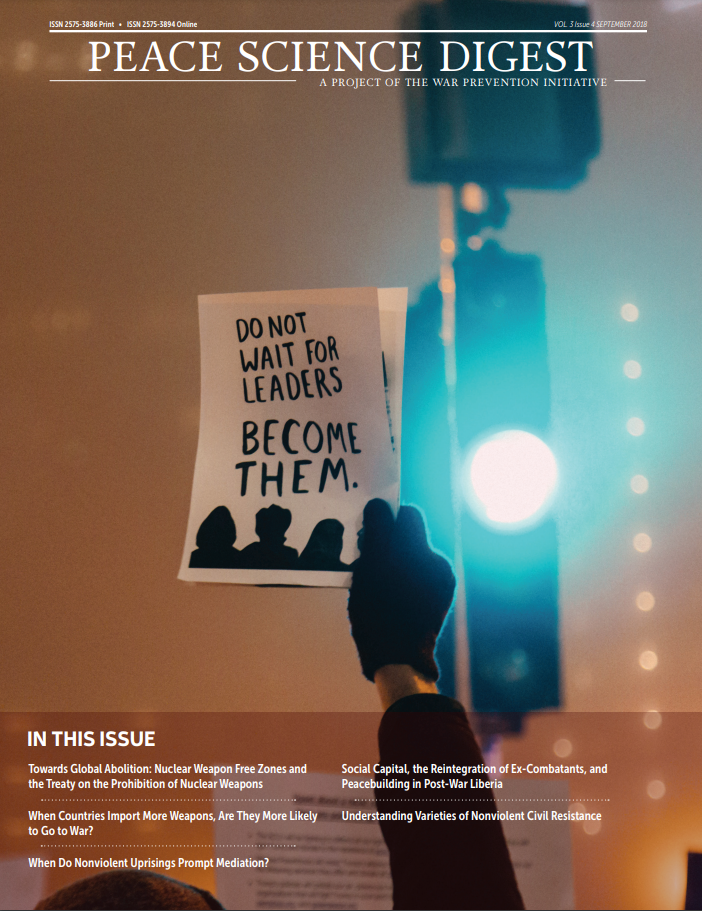In this issue, we examine research on the successful nuclear weapon free zone treaties that helped pave the way to the 2017 Treaty on the Prohibition of Nuclear Weapons, and how approaching nuclear weapons prohibition through regional stepping stones may be the key to global abolition. Next, by looking at a study on levels of weapons imports, we see a direct relationship between the influx of weapons and the likelihood of a specific classification of countries engaging in civil war. In the third analysis, we learn that less than one in five nonviolent uprisings in the past 45 years has attempted mediation to resolve the conflicts they seek to address. It turns out that higher risks and costs associated with a nonviolent uprising—either the presence of radical flanks or high levels of state repression—are closely related to mediation attempts. Next, we are taken to post-war Liberia where we explore the role of trust, norms, and social networks play in the ability of former combatants to reintegrate into society. The research highlights additional perspectives on the devastating toll war plays on individuals and societies, even after the fighting ends. Our last analysis focuses on why different organizations in the same movement choose the specific nonviolent tactics they do, resulting in a consideration of resource availability, interdependence, and strategic decision-making.
- Towards Global Abolition: Nuclear Weapon Free Zones and the Treaty on the Prohibition of Nuclear Weapons
- When Countries Import More Weapons, Are They More Likely to Go to War?
- When Do Nonviolent Uprisings Prompt Mediation?
- Social Capital, the Reintegration of Ex-Combatants, and Peacebuilding in Post-War Liberia
- Understanding Varieties of Nonviolent Civil Resistance

